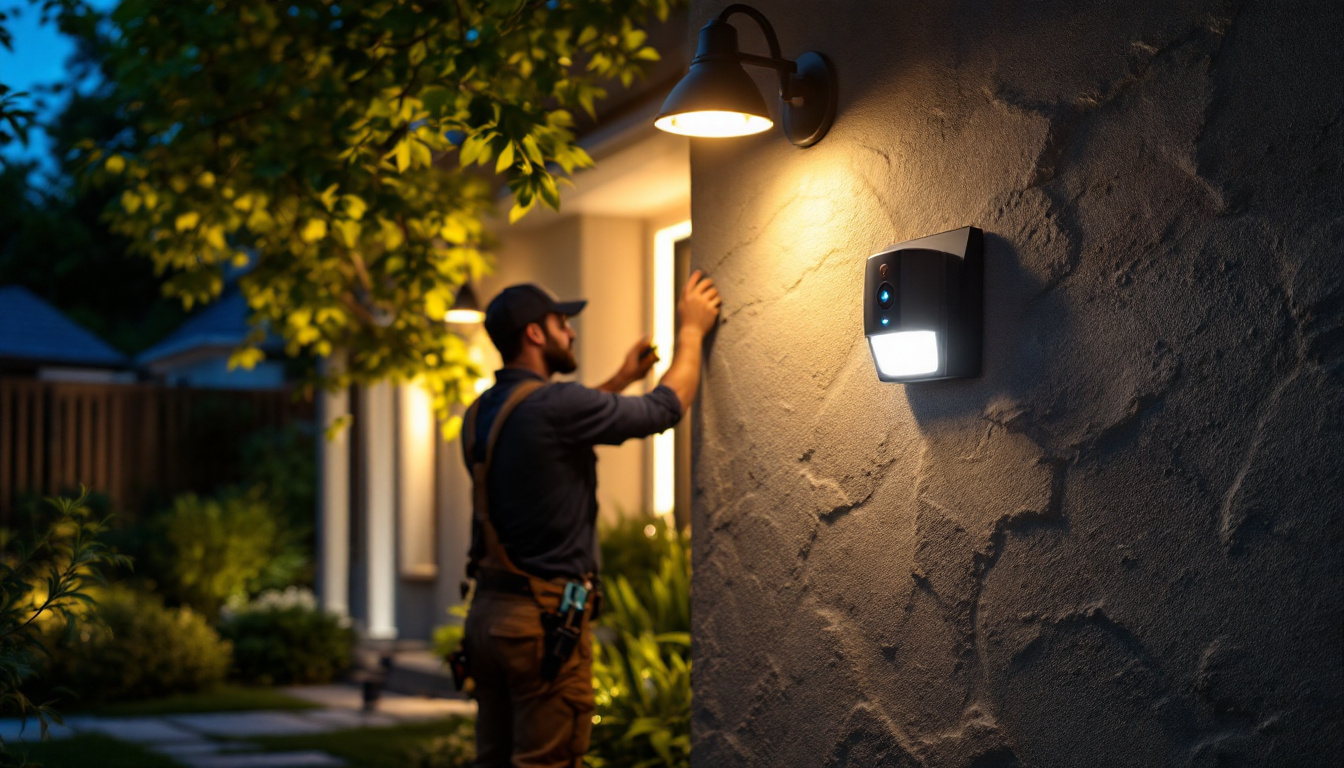
In the ever-evolving world of lighting design and installation, staying ahead of the curve is essential for lighting contractors. Xtralight provides a comprehensive resource for contractors looking to enhance their skills, improve their services, and ultimately, boost their business. This guide will delve into various aspects of lighting contracting, from understanding the latest technologies to mastering client relationships.
As a lighting contractor, familiarity with the latest technologies is vital. The lighting industry has seen significant advancements, particularly in energy efficiency and smart lighting solutions. Understanding these technologies not only enhances your service offerings but also positions you as a knowledgeable expert in the field.
LED lighting has revolutionized the way spaces are illuminated. With their energy efficiency, longevity, and versatility, LEDs have become the go-to choice for both residential and commercial projects. Contractors must understand the different types of LEDs available, including standard bulbs, strips, and fixtures, as well as their applications in various settings.
Additionally, contractors should be aware of the importance of color temperature and CRI (Color Rendering Index) when selecting LED products. These factors can significantly impact the ambiance of a space and the satisfaction of clients. For instance, warmer color temperatures can create a cozy atmosphere in homes, while cooler temperatures are often preferred in work environments for their ability to enhance focus and productivity. Moreover, understanding the dimming capabilities of LEDs can further enhance the versatility of lighting designs, allowing for tailored solutions that meet the specific needs of each project.
Smart lighting systems are gaining traction, offering enhanced control and customization. These systems allow users to adjust brightness, color, and even schedule lighting based on their needs. Familiarity with smart lighting technologies, such as Wi-Fi, Zigbee, and Bluetooth-enabled systems, is crucial for contractors looking to offer modern solutions.
Implementing smart lighting can also lead to energy savings, making it an attractive option for eco-conscious clients. Understanding how to integrate these systems into existing infrastructures can set contractors apart in a competitive market. Furthermore, the ability to create automated lighting scenarios—such as setting lights to gradually brighten in the morning or dimming in the evening—can enhance user experience and convenience. As smart home technology continues to evolve, staying updated on the latest innovations, such as voice-activated controls and compatibility with other smart devices, will be essential for contractors aiming to provide comprehensive lighting solutions that meet the demands of modern living.
Good lighting design is not just about illumination; it’s about creating an atmosphere that enhances the functionality and aesthetics of a space. Contractors must grasp the fundamental principles of lighting design to deliver exceptional results. The right lighting can evoke emotions, highlight design elements, and even influence productivity, making it a vital aspect of any interior or exterior project.
layering light involves using multiple sources of light to create a balanced and dynamic environment. This technique includes ambient, task, and accent lighting. Ambient lighting provides overall illumination, task lighting focuses on specific areas, and accent lighting highlights architectural features or artwork. By thoughtfully combining these layers, designers can craft spaces that are not only visually appealing but also functional for their intended use.
Understanding how to effectively layer light can transform a space, making it feel more inviting and functional. Contractors should assess the needs of each project and recommend appropriate lighting layers to achieve the desired effect. For instance, in a kitchen, bright task lighting over countertops can enhance cooking efficiency, while softer ambient lighting can create a warm, welcoming atmosphere for family gatherings. Moreover, accent lighting can be strategically placed to draw attention to a beautiful backsplash or a piece of artwork, adding depth and character to the overall design.
Light distribution plays a crucial role in how a space is perceived. Factors such as beam angle, fixture placement, and the use of reflectors can influence how light is spread throughout an area. Contractors should be adept at calculating and planning for optimal light distribution, ensuring that every corner of a room is adequately illuminated. This not only enhances visibility but also contributes to the overall mood of the space, making it feel more open and inviting.
Additionally, considering the impact of natural light is essential. Contractors should evaluate how windows and skylights interact with artificial lighting to create a harmonious balance. The interplay of natural and artificial light can significantly affect the color temperature and ambiance of a room throughout the day. For example, a well-placed skylight can flood a room with daylight, reducing the need for artificial lighting during daytime hours, while strategically positioned fixtures can complement this natural light, ensuring that the space remains bright and welcoming even as the sun sets. Understanding these dynamics allows contractors to create environments that feel alive and responsive to the time of day, enhancing the overall experience for the occupants.
Building strong relationships with clients is fundamental to the success of any lighting contractor. Effective communication can lead to repeat business and referrals, which are invaluable in this industry.
Adopting a consultative approach allows contractors to better understand their clients’ needs and preferences. This involves asking questions, listening actively, and providing tailored solutions based on the client’s vision and budget.
Taking the time to educate clients about different lighting options and their benefits can also foster trust and confidence. When clients feel informed, they are more likely to appreciate the contractor’s expertise and recommendations.
Clear communication about project timelines, costs, and potential challenges is essential in managing client expectations. Contractors should provide detailed proposals and keep clients updated throughout the project lifecycle. This transparency helps to build trust and minimizes misunderstandings.
Additionally, contractors should be prepared to handle any issues that arise during the project. Being proactive in addressing concerns can further strengthen client relationships.
Safety should always be a top priority for lighting contractors. Understanding and adhering to local codes and regulations is essential to ensure that installations are safe and compliant.
Contractors must be well-versed in electrical safety standards to prevent accidents and ensure the longevity of installations. This includes knowledge of wiring methods, circuit protection, and grounding techniques. Regular training and staying updated on changes in regulations can help contractors maintain compliance.
Moreover, using quality materials and equipment is crucial for ensuring safety. Contractors should source products from reputable manufacturers and verify that they meet safety standards.
With increasing awareness of environmental issues, contractors should also consider the ecological impact of their lighting solutions. This includes selecting energy-efficient products and promoting sustainable practices, such as using recyclable materials and minimizing waste during installations.
Contractors can further enhance their reputation by educating clients on the benefits of sustainable lighting options, such as LED technology and smart systems that reduce energy consumption.
In a competitive market, effective marketing strategies are essential for lighting contractors to stand out. Developing a strong brand and online presence can attract new clients and showcase expertise.
An online portfolio is an invaluable tool for showcasing completed projects. High-quality images and detailed descriptions can help potential clients visualize the contractor’s capabilities and style. Including testimonials from satisfied clients can further enhance credibility.
Contractors should also consider maintaining an active presence on social media platforms. Sharing project updates, lighting tips, and industry news can engage followers and position the contractor as a thought leader in the field.
Networking with other professionals in the industry can lead to valuable partnerships and referrals. Contractors should attend industry events, join local business organizations, and connect with interior designers, architects, and builders to expand their reach.
Collaborating with other professionals can also open doors to larger projects and opportunities for cross-promotion, ultimately benefiting all parties involved.
The lighting industry is constantly evolving, making continuing education essential for contractors. Staying informed about the latest trends, technologies, and best practices can enhance skills and improve service offerings.
Obtaining industry certifications can demonstrate expertise and commitment to professional development. Certifications from recognized organizations can enhance a contractor’s credibility and may even lead to increased business opportunities.
Contractors should seek out relevant training programs and workshops that focus on new technologies, design principles, and safety standards. Investing in education can yield significant returns in terms of client satisfaction and project success.
Subscribing to industry publications, joining professional associations, and participating in online forums can help contractors stay informed about emerging trends and technologies. Engaging with the broader lighting community can provide insights and inspiration for future projects.
By staying updated, contractors can position themselves as industry leaders and offer clients cutting-edge solutions that meet their evolving needs.
Xtralight serves as a valuable resource for lighting contractors seeking to enhance their skills and grow their businesses. By understanding the latest technologies, mastering design principles, building strong client relationships, and prioritizing safety, contractors can deliver exceptional results that exceed client expectations.
Moreover, effective marketing and a commitment to ongoing education can set contractors apart in a competitive market. Embracing these strategies will not only improve service offerings but also contribute to long-term success in the lighting industry.
In a world where lighting plays a crucial role in shaping environments, contractors have the opportunity to make a significant impact. By leveraging the insights and strategies outlined in this guide, lighting contractors can illuminate their path to success.
Ready to elevate your lighting projects with the best value in the industry? Look no further than LumenWholesale for spec-grade lighting products that combine quality, affordability, and convenience. Our extensive selection is designed to meet the highest industry standards, ensuring you get reliable, high-performance lighting for every project. Say goodbye to inflated markups and hello to hassle-free bulk buying with free shipping. Make the smart choice for your business and experience the LumenWholesale difference today!

Discover expert tips and strategies for lighting contractors to excel in installing LED motion lights outdoors.

Discover essential insights and expert advice on selecting and installing big temp LED fixtures for lighting contractors.

Discover effective strategies for training your team in the use of LED grow lights, ensuring optimal plant growth and energy efficiency.

Discover the ultimate guide to overhead office lighting with insights from top lighting contractors.